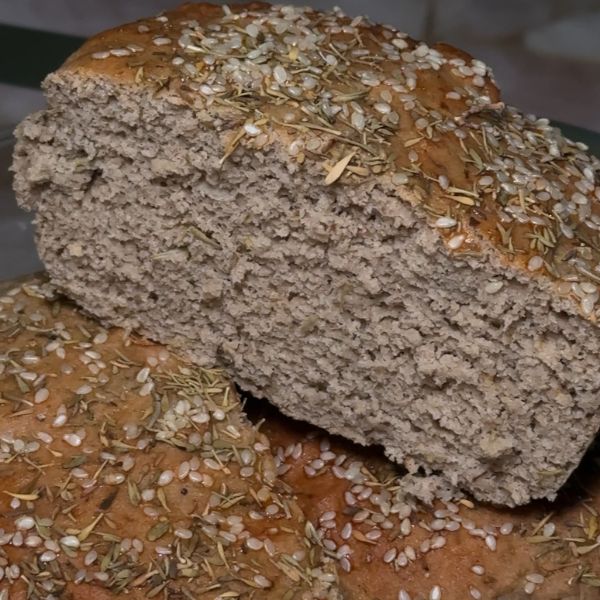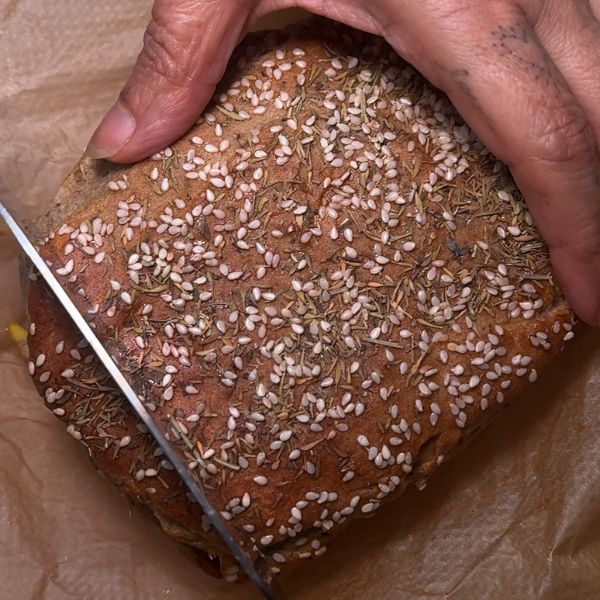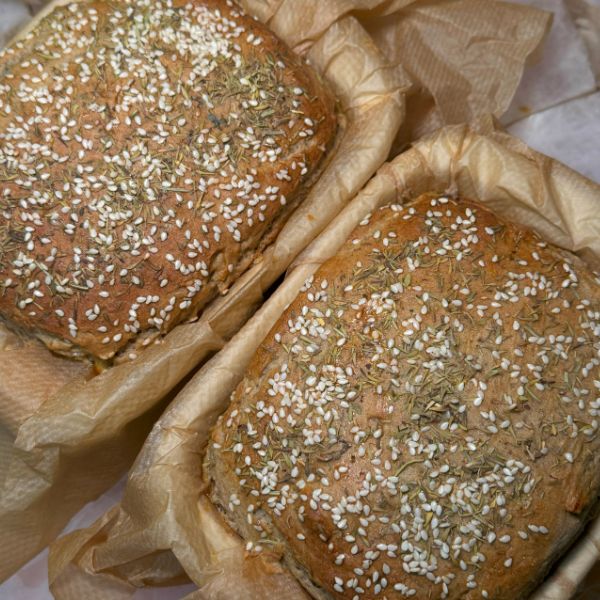

Are you missing the comfort of freshly baked bread on your gluten-free journey? Look no further! Today, I'm sharing a foolproof gluten-free bread recipe to revolutionise your baking game (you don’t need to be a professional baker; FYI, just have fun!) This isn't just any bread – it's a crusty, aromatic loaf that rivals traditional wheat bread in texture and taste.
When I started my anti-inflammatory journey for my skin and hormones, one thing I had to cut out from my diet was wheat, which was quite tricky at the time because, surprisingly, a lot more than you think has this ingredient! But then I started experimenting and learning to make my own, which nourished me inside out and supported my anti-inflammatory diet. Supporting your health needs doesn’t mean you need to restrict yourself from delicious foods!

While it might be tempting to slice into your warm, fresh-from-the-oven loaf, patience is key. Allowing the bread to cool completely (1-4 hours) ensures the perfect texture and makes it easier to slice. Trust me, it's worth the wait!

This is probably the only unfamiliar ingredient in the list above, but it is *crucial if you want to bake proper gluten-*free bread. When it’s mixed with water, psyllium husk forms a gel – which acts as the gluten substitute in the dough and the baked loaf.
Before baking, the psyllium gel helps to create a dough that can be kneaded and shaped (as opposed to a bread “batter” that has to be scooped or poured into a loaf tin).

There’s no right or wrong way to knead gluten-free bread, as you don’t have to go through the stretching motions you’d typically use to build up the elasticity in gluten-containing wheat bread.
Once the wet and dry ingredients are combined, I tend to squeeze the dough through my fingers until smooth and homogeneous. After a few minutes, you’ll notice the dough coming away from the sides, and it will be easy to form it into a rough ball.
While it won’t have the same super-stretchy elasticity of a gluten-containing wheat dough, there’s enough elasticity there that you can stretch portions without breaking off. (Thank you, psyllium husk!)
Before the bulk proof, shape the dough into a ball. This is best done on a lightly oiled surface with lightly oiled hands. Lightly flatten the dough into a disc, then take individual portions along the edge and fold them back, rotating the dough as you go.
Once you complete one 360-degree rotation of the dough, you should be left with a ball of dough. Flip it seam side down and rotate in place to seal the seams.

BECOME HER CHALLENGE EVERYDAY TO-DO LIST
Transform your life with these daily habits. It takes 28 days to make or break a habit. Commit to each practice for the next 28 days and see and feel the difference.
BECOME HER CHALLENGE - RECODE THE SPIRIT: DAILY PRACTICES FOR YOUR SPIRIT
Continuing our ReVibe detox challenge in 2025 and explored best practices for your body and mind, we now discover the daily practices for your spirit in part 3.
BECOME HER CHALLENGE - RECODE THE MIND: DAILY PRACTICES FOR YOUR MIND
Continuing on from our introduction to our ReVibe detox challenge in 2025 and best practice do your body, we dive into part 2 and the daily practices for your mind.